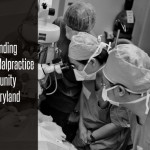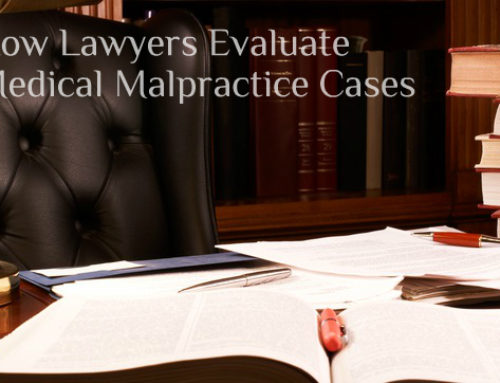The birth of a child should be a joyous occasion filled with hope and optimism. Unfortunately, if a birth defect or injury occurs, this happiness will come with stress, worry, and anguish for the family.
To understand your legal options if your newborn experiences one of these conditions, it is first important to recognize the differences between the two terms. So let’s take a look – what is the difference between a birth defect and a birth injury?
Comparing Birth Defects to Injuries
The terms ‘birth defect’ and ‘birth injury’ are often used interchangeably, and at first glance their meanings are similar. However, there are crucial differences between the two.
A birth defect occurs before the baby is born, while it is still developing in the womb. These can result from natural problems during gestation or can be the result of a preventable incident, such as a trauma suffered during development or toxins and chemicals that somehow entered the mother’s bloodstream and crossed over to the placenta and the baby’s bloodstream.
A birth injury occurs during the delivery of the baby or immediately afterward. Often, these are physical injuries resulting from the way in which the infant is handled – for example, brain damage or damage to the baby’s bones. However, birth injuries also include meconium aspiration syndrome – or MAS – which is a result of an infection.
Now that we have a better understanding of what each of these terms mean, we can explore them in more detail. This will provide insight into the types of defects and injuries that can occur in the United States.
Common Types of Birth Defects
‘Defect’ is something of an umbrella term that can refer to one or more of any number of different problems. These can be categorized in two distinct types: structural and metabolic.
A structural birth defect refers to when a baby is born with a missing body part or a part which is incomplete or abnormally formed. These can be minor and easy to put right – defects relating to the digits on the hands or feet, for example – or they can be extremely serious and even life-threatening, such as in the case of damage to the heart or another vital organ.
A metabolic birth defect occurs when there is a problem with the infant’s body chemistry, resulting in difficulty completing basic bodily functions, such as the production of energy from nutrients. Metabolic defects can also be wide-ranging in terms of the related symptoms and severity. They can be caused by a variety of different factors.
Types of Structural Birth Defects
Spina Bifida:Spina bifida refers to abnormalities in the vertebrae of a child during its development in the womb. Derived from the Latin term for ‘open spine’, spina bifida can manifest itself in many different ways, such as vertebrae which do not form in the normal shape or configuration, or in damage to the spinal cord or the nerves around it. Such defects may be visible through the skin or they may remain hidden.
Cleft Palate:A cleft palate is also referred to as an orofacial, and occurs when there is an opening in the lip or palate of a newborn baby. This birth defect is among the most common among children born in the United States. It usually occurs during the first ten weeks of the gestation period. Most cleft lip or palate defects are relatively minor and can be treated with surgery. Speech therapy and other forms of treatment will usually help the child go on to a normal life with no after effects.
Clubfoot: During the normal development of a child in its mother’s womb, the structure of the foot will grow in a straight and stable manner. However, a clubfoot defect occurs when the foot or the ankle joint grows at an abnormal angle, turning inwards so that the toes point towards the opposite foot, rather than straight forward. The child should experience no pain as a result of this defect, but, if left untreated, clubfoot can make it difficult for the child to walk as they grow, resulting in long term health problems.
Congenital Dislocated Hip:Congenital dislocated hip is an informal term for developmental dysplasia of the hip or DDH. In a healthy hip joint, the rounded top of the thighbone will fit into the ball and socket joint securely. However, if the child suffers from DDH, the ball part of the joint will be unstable and may move within the socket, resulting in an increased risk of dislocation. There are many causes of DDH. The majority of these are not completely understood by medical science. Developing in an awkward position in the uterus is one cause of DDH, although a range of other conditions may result in DDH as a side effect.
Types of Metabolic Birth Defects
Tay-Sachs Disease:Tay-Sachs Disease is an extremely serious metabolic birth defect that is often fatal. The disease occurs if the infant does not develop the enzymes necessary to rid its body of unwanted fatty protein and other material, which can cause severe damage to the central nervous system. Tay-Sachs disease is very rare, and, each year, fewer than 20 cases are recorded in the United States. The condition has also been found to be more prevalent in babies born to parents from certain ethnicities, with people from Ashkenazi Jewish backgrounds considered to be at the highest risk, as well as French-Canadian, French-American groups, and people with Irish ancestry.
Phenylketonuria: Another metabolic birth defect is phenylketonuria. This is a genetic condition which has been linked to learning difficulties, behavioral disorders, mental health issues, and seizures later in life. While also very rare, phenylketonuria is substantially more common than Tay-Sachs. Symptoms are displayed in around one in every 12,000 births each year. There are effective treatments available for newborns suffering from the defect but the most reliable means of combating the disorder is for mothers to undergo genetic screening to identify the gene and then continue with monitoring and treatment during the course of their pregnancy to minimize the danger.
Types of Birth Injury
In the tragic event that a birth injury occurs, the experience can be frightening and disorienting. This is why it is helpful to know and understand some of the medical terminology that may be used when discussing the newborn’s conditions and to recognize what to expect with each specific injury.
Use this section as a brief guide to some of the birth injuries which can occur. Remember, this is not an exhaustive list and there are other injuries that come under this classification.
Brain Injuries: Brain injuries usually occur either as a result of trauma or due to oxygen deprivation. How the newborn’s body reacts to this oxygen deprivation determines the type of brain injury or damage. For example, brain ischemia occurs when the body reacts by drawing blood away from the brain, while brain hemorrhaging occurs following a reaction to excessive blood flow into the organ. As the brain is incredibly complex, there are many ways in which this kind of injury can manifest itself, ranging from the mild and easily treated to the extremely severe and even life-threatening.
Physical Injuries: Physical injuries relate to any damage to the baby’s body during the birth or immediately after or before it. These injuries can include the following:
- Brachial plexus, in which the upper part of the baby’s arm is damaged or weakened
- Erb’s palsy, in which nerve damage occurs in the newborn’s upper arm
- Klumpke’s palsy, which occurs when nerves are damaged in the lower arm of the newborn
- Shoulder dystocia, referring to damage to the head and shoulders, usually incurred after the baby becomes trapped behind the pelvic bone of the mother at the time of delivery. This is a relatively common injury that occurs in around one in every hundred pregnancies. It is usually treatable although it can be severe.
Infections: The immune system of a newborn is weak and not fully developed, which makes the baby vulnerable to infection should an injury or wound occur. Because of this, it is vital that the baby is thoroughly checked, tested, and appropriately treated immediately after the birth to eliminate the possibility of infection. Other infections can be transmitted to the baby from the mother during birth. Testing the mother for these infections ahead of time will minimize the danger.
Injuries During Delivery:Deliveries vary greatly in terms of method and duration. When a birth is wholly natural, there are usually few complications. However, if tools such as forceps or a vacuum extractor are used, this may lead to damage to the baby. Errors during delivery can also result in injury, including broken bones, open wounds, or stress and hypertension in the newborn.
Persistent Pulmonary Hypertension: Often shortened to PPHN, persistent pulmonary hypertension of the newborn happens when the baby does not get enough oxygen during the birth process, resulting in increased heart rate, heart murmurs, or other potentially dangerous symptoms relating to cardiac function. There are a number of factors which may lead to PPHN, including natural but difficult births. However, the condition may also be caused by medical negligence.
Legal Implications of Birth Defects and Injuries
Winning a legal case will not eliminate the anguish and suffering of a birth defect or injury, but it can offer the financial relief that you and your family need as you provide care and treatment for your newborn. In this section, we will take a look at some of the legal implications that arise from birth defects or birth injuries.
Birth Defects as a Result of Environmental Causes
If you believe that a birth defect has been caused by an environmental factor, there may be legal implications, provided you are able to identify this factor and prove it to a reasonable extent. For example, there have been several high profile cases involving links between illegal chemical dumping and birth defects in newborns.
Birth Defects as a Result of Genetic Causes
Legal action can only be taken with regard to a birth defect if there is found to be a party at fault for the defect. In the case of a genetic defect, there will usually be no one at fault and therefore no one to blame. However, if you feel that the genetic disorder and resulting defects have been mishandled, you may be able to bring legal action against the appropriate party.
Birth Injuries as a Result of Malpractice
As we have seen above, birth injuries can be caused by a variety of factors, including natural factors and those relating to medical malpractice. If you have evidence that malpractice occurred and that this resulted directly in a birth injury to your newborn, you may have grounds to bring a medical malpractice suit against those responsible.
Birth Injuries as a Result of Neglect
Similar to an injury that results from malpractice, a birth injury which is a result of neglect occurs when medical staff does not conduct the proper checks, assessments, and other forms of care, during and following a birth. This sort of dereliction of duty is a serious matter and can result in a legal action being brought if neglect is proven.
Birth Injuries as a Result of External Factors
The different types of birth injuries we have explored in this article are only a few examples of potential harm to a newborn. As newborn babies and babies who are still developing in the womb have fragile tissues, organs, and other structures, they need far more protection than an older child might. Because of this, there are a number of external factors that can lead to birth injuries, including accidents, traumas, or exposure to harmful substances. If this leads to a birth injury and someone is at fault, there may be grounds for legal proceedings.
To learn more about birth defects and injuries, and to discuss your legal options, contact us today. We’re here to help.












